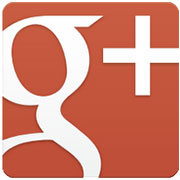
For the past several years, the money spent on online advertising has grown at the expense of other media platforms. That trend will probably continue, suggests a new report released Monday by the Interactive Advertising Bureau; it finds that brands will benefit from a 15 percent shift from TV ad spending to online video.
The specific advantages of that spending shift: Advertisers will boost their reach — defined in advertising terms as the number of people or households who have a chance to be exposed to those ads — and viewers will remember the ads better if they view them online first before being combined with TV spots.
The report was released by the IAB at its annual Leadership Meeting in Phoenix, Arizona. Nielsen conducted the research, which was commissioned by the IAB and a number of sponsors including Yahoo and Microsoft.
Benchmark on Ad Spend
The benchmark study looked at how real TV schedules perform for key advertisers. To conduct research, 18 TV schedules were reviewed across advertiser categories including consumer package goods, technology, automotive, retail, finance and telecommunications. The study found that all categories benefit from a 15 percent shift in media spend from TV to digital, and brands can get more people exposed to their ads.
“Those numbers are not really aggressive because in truth, there may be advertisers already investing 15 percent in online,” IAB Senior Vice President Sherrill Mane told the E-Commerce Times. “At 15 percent, you start to see a one-two punch in ad effectiveness.”
Consumer package goods realized 3.4 percent growth among the 18-and-older age group when 15 percent of ad spend was moved to digital platforms. All other categories averaged an incremental jump of 6.2 percent when the same amount of money was moved to digital within the same age group.
A Banner Moment
A key finding from the report: Ads tend to have more of an impact when they are seen online first. TV-only general recall totaled 46 percent, but when combined with online ad formats, those numbers went up.
Banner ads viewed prior to TV ads provided the biggest lift. Banner ads saw 55 percent recall, but when combined with TV recall, that figure shot up by 20 percent.
Online short form video ads had a recall of 54 percent and caused a 17 percent lift for TV. Similar numbers were found with video ads running with full episodes: The format experienced 53 percent general recall and a 15 percent lift for TV recall.
“Whether it is seeing digital video first, or seeing a banner ad first, when you put that with TV you bump up the effectiveness of TV as well,” said Mane.
Giving viewers a chance to engage with ads can provide even deeper recall, said Randy Kilgore, chief revenue officer at TremorVideo. “Our belief is, don’t just take TV ads and put them online,” he told the E-Commerce Times, “but make them interactive.” That style of ad gained an additional 8 percent lift.
Light Video
The report also provides fodder for cut-the-cord advocates: Those who don’t want a lot of TV end up watching a lot of online video. Members of the 18-to-34 age group watch more video content online than on TV. A shift towards online video ads also reaches those consumers.
“TV viewing is pretty much flat. It’s not going down, there’s almost no erosion, so people still watch TV,” Mane said. “But while that is happening, digital usage, particularly digital video, is increasing. You will do extremely well in trying to reach a hard-to-reach demographic — they are online.”
“It’s coupled with the overall findings about moving 15 percent — that creates more efficiency as well,” said Kilgore. “Money has to follow eyeballs.”
Behind the Methodology
It’s not easy for the Interactive Advertising Bureau to release a report stating the benefits of moving dollars to online. IAB officials were aware they could be suspected of bias.
“Because we invested as much intellectual and financial capital as we did, we felt that we had to be completely transparent and utterly complete in releasing data,” said Mane.
To compile the research, the IAB worked with Nielsen, using 18 TV schedules that had already been examined by the research firm. The report looked at data surrounding those TV schedules, then studied what happened when 5, 10, and 15 percent of ad spends were moved to digital, Mane said.
“It shows that in a multi-screen world, a multi-platform world — where consumers are being bombarded by messaging — that certain combinations are effective,” Mane said.












































Social Media
See all Social Media